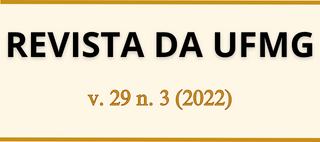Medicina Culinaria
La intersección de la comida, la ciencia y el arte
DOI:
https://doi.org/10.35699/2316-770X.2023.40722Palabras clave:
Salud, Arte, Medicamento, Cocinando , TecnologíaResumen
El alimento es la base de la supervivencia de los animales porque a través de él se adquieren nutrientes que participan en reacciones químicas para generar energía, construir células y tejidos y permitir el desempeño de funciones biológicas. Los conocimientos tecnológicos adquiridos por la especie humana a lo largo de su existencia permitieron el crecimiento demográfico, la evolución intelectual y cognitiva, la revolución industrial y la promoción/mantenimiento de la salud. La Medicina Culinaria define el renacimiento de un área de la actividad médica con capacidad para tratar los trastornos alimentarios con un enorme impacto en la salud de la especie humana.Descargas
Citas
- AFSHIN A, FOROUZANFAR MH, REITSMA MB, et al. Health effects of overweight and obesity in 195 countries over 25 years. N Engl J Med, v.377, n.1, p.13–27, 2017.
- BAR-YOSEF O. The Upper Paleolithic revolution. Annu Rev Anthropol v.3, n.1, p.363–393, 2002.
- BOGIN B, RIOS L. Rapid morphological change in living humans: implications for modern human origins. Compar Biochem Physiol Part A, v. 136, p. 71–84, 2003.
- Brasil. Ministério da Saúde. Secretaria de Atenção à Saúde. Departamento de Atenção Básica. Guia alimentar para a população brasileira / Ministério da Saúde, Secretaria de Atenção à Saúde, Departamento de Atenção Básica. – 2. ed., 1. reimpr. – Brasília : Ministério da Saúde. 156 p. : il, 2014.
- CACHEL S. Dietary shifts and the European Upper Palaeolithic transition. Curr Anthropol v. 18, p.579–603, 1997.
- EVELETH PB, TANNER JM. Worldwide variation in human growth. Cambridge: University Press, 1990.
- FLADRIN JL, MONTANARI M. História da Alimentação. São Paulo: Estação Liberdade, 2003.
- GIBNEY, MJ. Ultra-Processed Foods: Definitions and Policy Issues. Curr. Dev. Nutr, v.3, p.077, 2019.
- HEGEL GWF. Aesthetics. Lectures on Fine Art, trans. KNOX TM, 2 vols. Oxford: Clarendon Press, 1975.
- HENSHILWOOD CS et al. Emergence of modern human behavior: Middle Stone Age engravings from South Africa. Science, v. 295, p. 1278–1280, 2002.
- HOLT BM, FORMICOLA V. Hunters of the Ice Age: The Biology of
Upper Paleolithic People, Yearbook Of Physical Anthropology v. 51, p.70–99, 2008.
- JACKS LM et al. The Obesity Transition: Stages of the global epidemic. Lancet Diabetes Endocrinol, v.9, n.3, p. 231–240, 2019.
- KREBS-SMITH SM, PANNUCCI TE, SUBAR AF, KIRKPATRICK SI, LERMAN JL, TOOZE JA, WILSON MM, REEDY J. Update of the Healthy Eating Index: HEI-2015. J Acad Nutr Diet, v.118, n.9, p. 1591-1602, 2018.
- LEBLANC-MORALES N. Culinary Medicine: Patient Education for Therapeutic Lifestyle Changes. Crit Care Nurs Clin North Am, v.31, n.1, p. 109-123, 2019.
- LUSTIG RH. Ultraprocessed Food: Addictive, Toxic, and Ready for Regulation, Nutrients, V.12, P. 3401, 2020.
- MARSHALL H, ALBIN J. Food as Medicine: A Pilot Nutrition and Cooking Curriculum for Children of Participants in a Community-Based Culinary Medicine Class. Matern Child Health J, v.25, n.1, p. 54-58, 2021.
- MICHAELIS: Dicionário Brasileiro da Língua Portuguesa. São Paulo: Companhia Melhoramentos, 2015.
- MOUBARAC, JC, PARRA D, CANNON G, MONTEIRO CA. Food classification systems based on food processing: Significance and implications for policies and actions. A systematic literature review and assessment. Curr. Obes. Rep, v.3, p. 256–272, 2014.
- MUNT AE, PARTRIDGE SR, ALLMAN-FARINELLI M. The barriers and enablers of healthy eating among young adults: a missing piece of the obesity puzzle: A scoping review. Obes Rev, v.18, n.1, p.1-17, 2017.
- NCD Risk Factor Collaboration (NCD-RisC). Worldwide trends in body-mass index, underweight, overweight, and obesity from 1975 to 2016: a pooled analysis of 2416 population-based measurement studies in 128· 9 million children, adolescents, and adults. Lancet. v. 390, n.10113, p. 2627–42, 2017.
- PORTER SS, SACHS JL. Agriculture and the Disruption of Plant-Microbial Symbiosis, Trends Ecol Evol, v.35, n.5, p. 426-439, 2020.
- RAND A. Ayn Rand e os devaneios do coletivismo. 1. Edição. LVM, 2019.
- RAO M, AGARWAL P. Culinary medicine: exploring diet with tomorrow's doctors. Can Med Educ J, v.12, n.6, p.128, 2021.
- SHARMA SV et al. Impact of a Virtual Culinary Medicine Curriculum on Biometric Outcomes, Dietary Habits, and Related Psychosocial Factors among Patients with Diabetes Participating in a Food Prescription Program. Nutrients, v. 13, p. 4492, 2021.
- SHOREY S, CHAN V. Effectiveness of healthy eating interventions among children: A quantitative systematic review. J Adv Nurs, v.77, n.2, p. 583-594, 2021.
- SMITH KR, EZZATI M. How environmental health risks change with development: the epidemiologic and environmental risk transitions revisited. Annu Rev Environ Resour, v.30, p.291–333, 2005.
- THIS HJM. Nicholas Kurti, one of the founding fathers of Molecular Gastronomy, Acta Physica Hungarica , v.10, n.1, p. 21-28, 1999.
- WORLD OBESITY FEDERATION. Prevalence of Obesity. https://www.worldobesity.org/about/about-obesity/prevalence-of-obesity, 2022.




